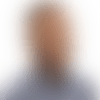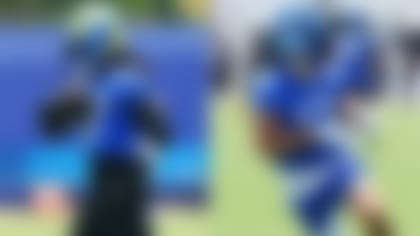With training camps scheduled to begin this month, it's time to get up to speed on all 32 NFL teams. Below, Jelani Scott has the lowdown on position battles, strengths, weaknesses and newcomers in the NFC South.

Most important position battle: Cornerback. The Falcons spent the 16th overall selection of the 2020 NFL Draft on Clemson cornerback A.J. Terrell, a decision that comes with Week 1 starter expectations. Not only will the former first-team All-ACC selection be tasked with replacing long-time starter Desmond Trufant, who was released in March before signing with the Lions, but he will do so playing in a division stockpiled with superb receivers. Third-year CB Isaiah Oliver -- the 58th overall selection in 2018 and a 16-game starter last season -- will be competing to keep his starting job, and 2019 fourth-rounder Kendall Sheffield, whom coach Dan Quinn spoke highly of this spring, is also in the mix for starter's reps. Blidi Wreh-Wilson, who'll turn 31 in December, could also be in play, but the young bucks are the favorites for the leading roles.
Biggest strength on roster: Wide receiver. Anytime a guy breaks one of Jerry Rice's records, said guy is a prime candidate to earn a label like this for his position group. In his 125th career game -- a 10-catch, 166-yard outing against the Jaguars in Week 16 -- Julio Jones became the fastest player in NFL history to record 12,000 career receiving yards, reaching the mark in 17 fewer games than Rice did. After yet another Pro Bowl selection (his seventh), Jones enters Year 10 as this team's most potent player. Calvin Ridley further solidified his standing as one of the league's best budding stars at receiver with a solid Year 2 (63 receptions, 866 yards, seven TDs in 2019). Jones, Ridley and a developing group of young pass catchers, including Christian Blake, Russell Gage and Olamide Zaccheaus (plus, a veteran looking for a fresh start in Laquon Treadwell), gives Matt Ryan a potentially explosive corps to work with.
Biggest weakness: Tight end. Two-time Pro Bowler Austin Hooper, who departed for Cleveland in free agency, isn't walking through that door in 2020, and it won't take long for the offense to feel that void. Atlanta made a deal with the Ravens to acquire Hayden Hurst, the 25th overall pick in the 2018 draft, as a Hooper replacement, but that could be a huge downgrade, as Hurst turns 27 in August and has yet to break through. Granted, Hurst did share targets with Pro Bowler Mark Andrews and Nick Boyle in Baltimore, but his production in two seasons (43 catches, 512 yards, three TDs) falls well short of what Hooper did in 2019 alone (75/787/6). Former XFL standout Khari Lee could make a case for significant playing time if Hurst underperforms, but barring any late changes to the tight end room, Ryan -- who recorded his fewest yards per attempt (7.3) since 2013 last season -- had better be ready to look downfield more.
Newcomer/player returning from injury to watch: Todd Gurley, running back. It still doesn't make sense to me that Gurley will be playing his age-26 season on a one-year, incentive-laden contract, but nagging injury concerns compounded by a down 2019 have brought us to this point. Two seasons removed from being named Offensive Player of the Year, Gurley registered career lows in carries (223) and rushing yards (857) while rushing for 57.1 YPG, his fewest since 2016. He also added 31 catches for 207 yards, his fewest since his rookie campaign. Gurley should be afforded the chance to prove that he can be a workhorse once again. If he's unable to stay in the lineup, though, the perception of his abilities at this stage of his career will take another hit, and Atlanta will have to turn to Brian Hill and/or Ito Smith.

Most important position battle: Edge rusher. The addition of Penn State product Yetur Gross-Matos, a second-round pick in this year's draft, introduces another high-upside hopeful to this crop of edge rushers. Brian Burns, a 2019 first-rounder, trudged through a rookie year that included midseason wrist surgery to put together a promising debut campaign (25 tackles, 16 QB hits, 7.5 sacks). Efe Obada, 28, and offseason acquisition Stephen Weatherly, 26, are entering phases of their careers in which the allure of untapped potential is becoming less enticing. A coaching staff and fan favorite, Obada has recorded 32 tackles, 11 QB hits and two sacks over his two NFL seasons while Weatherly tallied 67/17/6 as a rotational guy for the Vikings in the last four seasons. Marquis Haynes, a 2018 fourth-rounder, was hobbled down the stretch last season (12 tackles, sack in 11 games); perhaps adding some weight this offseason will help him reach the next level. Plenty of snaps are up for grabs, and Carolina needs someone to step up after the departures of Mario Addison and Bruce Irvin (who had 18 sacks combined last season) in free agency.
Biggest strength on roster: Wide receiver. Speaking of potential, what a lethal trio D.J. Moore, Curtis Samuel and newcomer Robby Anderson, one of the league's premier deep threats, could turn out to be. Teddy Bridgewater was among the NFL's most efficient short passers in 2019, but having this young, versatile arsenal of weapons to create with could really open up his game. D.J. showed moore and moore that he can handle a WR1 workload, notching a career-best 1,187 yards, 87 receptions (135 targets) and four TDs while averaging 78.3 YPG (up from 49.3 his rookie year). Samuel, meanwhile, could be poised for a breakout year. It's not a mistake that PFF ranked this group the league's eighth-best receiving corps. It was tempting to put running back in this spot, given the one-man wrecking crew that is Christian McCaffrey, but the depth of the group at receiver stands out most overall.
Biggest weakness: Linebacker. While the D-line certainly played a role in the Panthers' run defense sinking to 29th in the league last season, the linebacker corps struggled to provide support. And that struggle will only be amplified by the retirement of future Hall of Famer Luke Kuechly. Sixth-year veteran Shaq Thompson, fresh off a career-high 109-tackle season, provides some stability, but unless ex-Raider Tahir Whitehead or 2018 draft picks Jermaine Carter and Andre Smith massively improve, there's little to be optimistic about here.
Newcomer/player returning from injury to watch: Graham Gano, kicker; Kawann Short, defensive tackle. Yes, I'm picking two guys here. Short, 31, is nearly a year removed from being limited to two games, thanks to a partially torn rotator cuff. A left leg injury robbed Gano, 33, of his 2019 season, and now he enters a potentially heated competition with second-year veteran Joey Slye, who converted 25 of his 32 field goal attempts and went 31 of 35 on extra points last season. Both Short and Gano are former Pro Bowlers, but they enter camp needing to prove they haven't lost a step, with two years remaining on their respective deals.

Most important position battle: Backup quarterback. For as much praise as Taysom Hill receives for being a jack of all trades, the fourth-year pro stated earlier this offseason that he remains focused on starting one day at quarterback. You know who else has a similar goal? The player he'll be competing against in camp! I mean, I'm not sure how many people get a "Harvard education" and then don't plan on doing big things with it. So, it's obvious Jameis Winston sees 2020 as a stepping stone to his next starting gig. Hill might have a leg up entering his fourth year in Sean Payton's system but, if the eccentric Winston puts his infamous 30-30 campaign behind him, the battle to back up Drew Brees, who missed five games last season due to an injured thumb, will be intriguing, to say the least.
Biggest strength on roster: Offensive line. From top to bottom, it's hard to argue there's a stronger unit on this roster than the front five. After admirably filling long-time center Max Unger's cleats last season, Erik McCoy enters Year 2 with a full season under his waistband. Left guard Andrus Peat followed his second consecutive Pro Bowl nod by inking a five-year deal in March; next to Peat in the trenches is fellow two-time Pro Bowler Terron Armstead. The soon-to-be 29-year-old left tackle is the oldest player among the O-line starters. Right tackle Ryan Ramczyk was selected first-team All-Pro in 2019, a year after making the second team. The club did release three-time Pro Bowl right guard Larry Warford in May, but only after bolstering the line with the selection of Michigan C/G Cesar Ruiz with the 2020 draft's 24th overall pick. The combination of blocking prowess and Brees' quick release time helped place New Orleans fifth-place spot in PFF's O-line rankings following last season, which is great news for the Saints' QB1 as his illustrious career winds down.
Biggest weakness: Linebacker. Disclaimer: If your name is Demario Davis, this isn't for you. Outside of Davis, a 2019 first-team All-Pro selection, the Saints will be leaning on injury-prone or unproven young players at the position. The team's linebacker corps suffered a blow in March, losing three-year starter A.J. Klein to Buffalo. Starting outside linebacker Alex Anzalone has missed significant time due to injuries in two of his three NFL seasons, including 2019. Kiko Alonso is still on the mend after suffering the third ACL tear of his football career in the Saints' Wild Card Round loss to the Vikings. Rookie Zack Baun, a third-round pick, could provide a boost right away, but it's not unreasonable to say that on a team with few weaknesses, this group could struggle to find consistent production outside of Davis.
Newcomer/player returning from injury to watch: Emmanuel Sanders, wide receiver. A record-breaking campaign established Michael Thomas as the biggest dog in the wide receiver yard, but imagine how the addition of Sanders could make him even more dangerous. At the same time, joining a room that includes Thomas will likely lead to more targets for the 33-year-old Sanders. Sanders was the only player to participate in 17 regular-season games last season -- he missed out on a bye week after being traded from the Broncos to the 49ers -- but the increased workload didn't appear to hamper his play. Sanders had only one drop on 96 targets last season, per PFF. Sanders' veteran presence proved crucial for the young 49ers offense during its run to Super Bowl LIV; the savvy Sanders will look to make the same impact as the elder statesman for the Saints WR corps.

Most important position battle: Safety. Dang, Tampa. Back at it again with the subpar secondary? Many of the concerns from a year ago remain as the pass defense again underwhelmed, surrendering the second-most completions per game (25.5), third-most pass yards per game (270.1) and tying for the seventh-most pass touchdowns allowed (30). A strong second half from the cornerbacks provides some sense of optimism, and while promising options exist at safety, the competition for playing time at the position could be intense. Andrew Adams, Mike Edwards and Jordan Whitehead will return after combining for 18 pass deflections and two interceptions while seeing starting duty in 2019. Whitehead's 25 career starts position him for first-team reps in a relatively inexperienced backend, but that's not necessarily set in stone. Versatile rookie Antoine Winfield Jr., whom management is rightfully high on, will also be vying for playing time. The same goes for 2017 second-rounder Justin Evans -- a starter in Years 1 and 2 who missed the 2019 season due to injury -- and 2019 camp darling D'Cota Dixon, who also spent last season on injured reserve. Given all the moving parts, defensive coordinator Todd Bowles will likely have some tough decisions to make when it comes to sorting things out at this position.
Biggest strength on roster: Defensive front seven. With all due respect to the Bucs' Pro Bowl tandem at wide receiver, I must give a different group the nod here. With the future of 2019 sack leader Shaq Barrett officially done commanding headlines (until 2021, at least), we can marvel at this beastly collection of talent. Barrett, Jason Pierre-Paul, Pro Football Focus favorite Lavonte David and Devin White comprise a playmaking quartet that few teams can match. The foursome totaled 31.5 sacks, 65 QB hits, 14 forced fumbles, 14 pass deflections and three picks in 2019. William Gholston, Ndamukong Suh (playing on his second straight prove-it deal) and Vita Vea are certainly no slouches on the interior. In fact, Suh played a major role in this unit's success last season. The 33-year-old was double-teamed on 261 snaps (the third-most in the NFL), according to ESPN, which helped keep blockers off linebackers and paved the way for Tampa to post the league's best run defense (73.8 YPG). He also placed among the top five defensive tackles in QB pressures (43), per Next Gen Stats. Bowles' 3-4 scheme worked wonders for this core a year ago, and it will be thrilling to see what it produces in 2020.
Biggest weakness: Running back. For a team with Super Bowl aspirations and a QB in his twilight years (no shade), having a reliable run game is key. So, it's a bit concerning that the Bucs haven't had a 1,000-yard rusher since 2015. Ronald Jones (172 carries, 724 yards, six TDs; 31 receptions, 309 yards) took a step in the right direction after a rough rookie year, but is he ready to be the full-time RB1 after previously splitting time with the now-departed Peyton Barber? Tom Brady has enjoyed a 900-plus-yard rusher in four of his six title-winning seasons; will Jones be able to produce at that clip? How will fourth-year back Dare Ogunbowale (35 catches last season) and rookies Ke'Shawn Vaughn and Raymond Calais factor into offensive coordinator Byron Leftwich's game plan? There are just too many unproven entities in the backfield.
Newcomer/player returning from injury to watch: Rob Gronkowski, tight end. "We have Gronk" is more than likely the answer Tampa fans will give when explaining why their team will never lose on Sundays (or Mondays or Thursdays) ever again. Of course, the monstrous WR tandem we mentioned earlier will have a hand in the team's success, as well, but the magnitude of Rob Gronkowski running it back with Brady is hard to overlook. The Next Gen Stats graphic below provides a reminder of the damage the duo can do, and of the championship pedigree Gronk brings to a tight end room that already had two sets of reliable hands in Cameron Brate and O.J. Howard. Sure, there's a chance that Gronk, a member of the NFL 100 All-Time Team, is unable to shake off the rust created by his 16 months away from football, but let's be honest here: Gronk is the team's most interesting newcomer. TB12 is a very close second, though.












